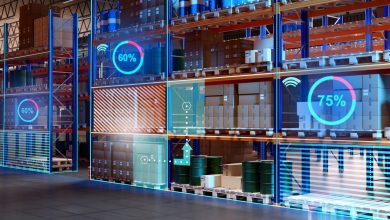Diesel forklifts have long been known as tough machines that perform well in harsh, highly demanding environments. Their straightforward, traditional design makes them particularly well-suited to outdoor and heavy-duty tasks, where electric models may not yet be viable. For many businesses, diesel power connotes equipment built for endurance rather than intelligence.
However, this traditional view is gradually shifting. As artificial intelligence (AI) and automation technologies become more accessible, even the most rugged industrial equipment is starting to integrate smarter capabilities. While attention often centres on fully autonomous vehicles or electric alternatives, diesel forklifts are also undergoing a quiet transformation. Businesses that rely on them for daily operations are discovering that added intelligence does not require replacing what already works; it simply means making what they have work better.
Throughput and safety are the chief concerns in today’s fast-paced logistics and industrial sectors. Diesel forklifts may not be new, but the integration of intelligent technologies is helping them meet these evolving demands. Businesses that depend on forklifts daily are coming to realise that these advancements are becoming a genuine strategic advantage. Let’s now explore several key ways in which AI and automation technologies are making diesel forklifts more intelligent and aligned with modern operational needs.
Predictive Maintenance
Unexpected downtime is more than just an inconvenience. It can disrupt entire workflows and inflate operating costs. By using AI-powered sensors to track real-time data such as oil pressure, engine temperature, and vibration patterns, diesel forklifts can now signal when a component is beginning to show signs of wear. Instead of waiting for a failure, you can schedule maintenance at the optimal time, reducing repair costs and keeping your fleet running consistently.
Fuel Efficiency Optimisation
Diesel fuel costs can add up quickly, especially in remote or high-usage environments. Smart monitoring systems can track how your forklifts are being operated and identify diesel-wasting behaviours like excessive idling, inefficient routes, or over-throttling. With these insights, you can implement data-informed changes to reduce fuel waste. Some advanced automation systems can even adjust throttle response or engine settings dynamically, conserving fuel without compromising performance.
Driver Assistance Systems
Operating a forklift in a busy warehouse or yard requires constant attention, especially when dealing with tight spaces, uneven loads, or limited visibility. AI-enhanced driver assistance systems can help by providing automated alerts, dynamic speed adjustments, and real-time load monitoring. The additional safety and support these features provide can help your team avoid collisions and maintain better control under pressure.
Telematics and Fleet Management
Efficient fleet management for forklifts requires more than just tracking usage hours and maintenance scheduling. With the help of AI-integrated telematics systems, you can gain real-time visibility into vehicle location, performance metrics, maintenance status, and operator behaviour—all from a central dashboard. More comprehensive oversight enables smarter resource allocation and more accurate cost tracking, enabling more confident, proactive decision-making across your operations.
Beyond simply increasing visibility, some systems even allow for custom rule-setting. For example, they can send alerts if a forklift enters a restricted area or if an operator exceeds a safe speed threshold. This helps enforce internal policies, supporting regulatory compliance and preventing serious incidents.
Adaptive Performance Control
Different tasks place different demands on forklifts. Instead of relying on manual adjustments or a one-size-fits-all performance mode, adaptive control systems use AI to assess the current load, terrain, and job requirements, fine-tuning engine output, gear shifting, and hydraulic functions automatically. As a result, forklifts with this kind of integration can deliver the right amount of power for each situation. The end result is less mechanical strain and longer lifespans for your equipment.
Integration with Warehouse Automation
As warehouses become increasingly digitalised, forklifts must be able to communicate with the systems around them. AI-enabled diesel forklifts can now receive instructions from warehouse management platforms, respond to real-time job assignments, and report back on task completion. Even without full autonomy, these machines can work in harmony with automated storage systems, robotic arms, and sensor-based inventory tracking, creating a more coordinated and efficient environment overall.
Enhanced Operator Safety and Reduced Fatigue
Repetitive tasks, long shifts, and physical strain can take a toll on forklift operators. AI-enhanced features such as assisted braking, automatic speed modulation, and load-balancing alerts reduce the need for constant manual corrections, easing fatigue and preventing accidents. Such features also relieve the physical and cognitive load on the operator, enabling them to maintain throughput without a drop in accuracy. When operators have comfortable conditions, retention tends to improve as well—a valuable outcome given that skilled forklift drivers are becoming increasingly difficult to replace.
Updating Traditional Forklifts for Our Digital Future
The evolution of diesel forklifts is no longer just about power or durability; it is also about effortless adaptability. As AI and automation continue to shape industrial equipment, staying informed and open to innovation may be the key to maintaining a safer, more efficient workplace.



